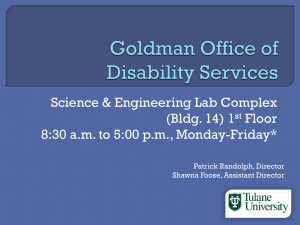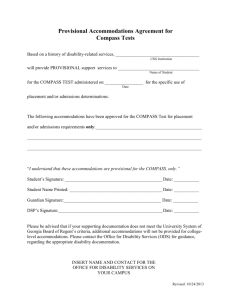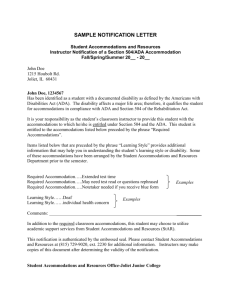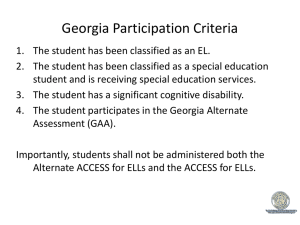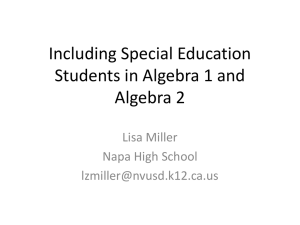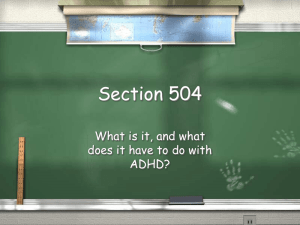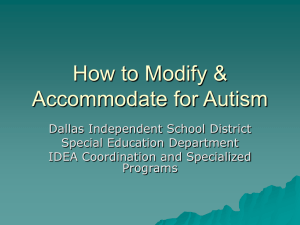Iris Module-Accommodations
advertisement
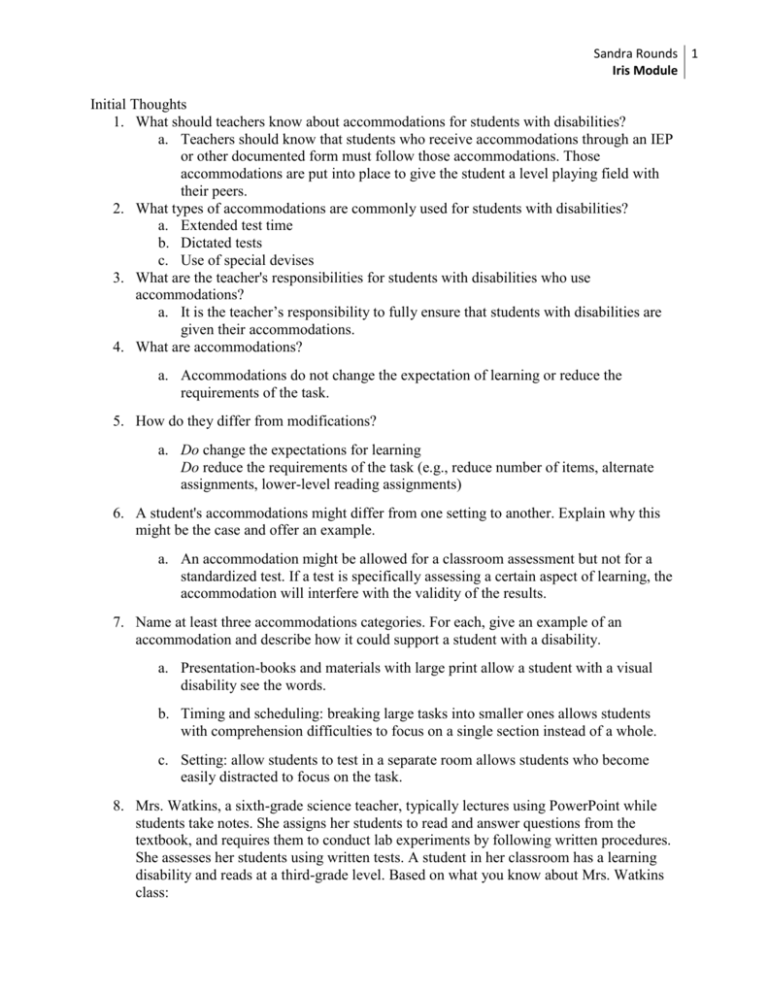
Sandra Rounds 1 Iris Module Initial Thoughts 1. What should teachers know about accommodations for students with disabilities? a. Teachers should know that students who receive accommodations through an IEP or other documented form must follow those accommodations. Those accommodations are put into place to give the student a level playing field with their peers. 2. What types of accommodations are commonly used for students with disabilities? a. Extended test time b. Dictated tests c. Use of special devises 3. What are the teacher's responsibilities for students with disabilities who use accommodations? a. It is the teacher’s responsibility to fully ensure that students with disabilities are given their accommodations. 4. What are accommodations? a. Accommodations do not change the expectation of learning or reduce the requirements of the task. 5. How do they differ from modifications? a. Do change the expectations for learning Do reduce the requirements of the task (e.g., reduce number of items, alternate assignments, lower-level reading assignments) 6. A student's accommodations might differ from one setting to another. Explain why this might be the case and offer an example. a. An accommodation might be allowed for a classroom assessment but not for a standardized test. If a test is specifically assessing a certain aspect of learning, the accommodation will interfere with the validity of the results. 7. Name at least three accommodations categories. For each, give an example of an accommodation and describe how it could support a student with a disability. a. Presentation-books and materials with large print allow a student with a visual disability see the words. b. Timing and scheduling: breaking large tasks into smaller ones allows students with comprehension difficulties to focus on a single section instead of a whole. c. Setting: allow students to test in a separate room allows students who become easily distracted to focus on the task. 8. Mrs. Watkins, a sixth-grade science teacher, typically lectures using PowerPoint while students take notes. She assigns her students to read and answer questions from the textbook, and requires them to conduct lab experiments by following written procedures. She assesses her students using written tests. A student in her classroom has a learning disability and reads at a third-grade level. Based on what you know about Mrs. Watkins class: Sandra Rounds 2 Iris Module a. List at least three areas where this student might experience difficulty in her classroom. i. First a student who reads at a third grade level may not be able to read the sixth grade textbook. ii. Thus the student would not be able to follow the instructions for performing the lab. iii. Thirdly the student doesn’t have opportunities to show what they have learned since most of the assessment opportunities are in written form. b. Suggest at least four types of information that Mrs. Watkins can share in an upcoming IEP meeting to help identify appropriate accommodations. i. Student reads at a third grade level ii. Provide information on how assessments are given iii. Give example of the science book iv. Provide the students strengths and needs c. List at least two presentation accommodations and two response accommodations the IEP team might identify for the student. Explain how these accommodations might help. i. The teacher could use books on tape for the student. ii. Tactile graphics may allow the student to recognize information in graphic form rather than in words only. iii. The use of graphic organizers to organize information. iv. The use of a recorder to record answers instead of writing in a text booklet. d. Based on the presentation and responses accommodations recommended above, what tips might be helpful for Mrs. Watkins to maximize her student's success? i. The teacher should allow the student time to practice using the new accommodations and be aware that students using accommodation might require more/less time to complete tasks.

